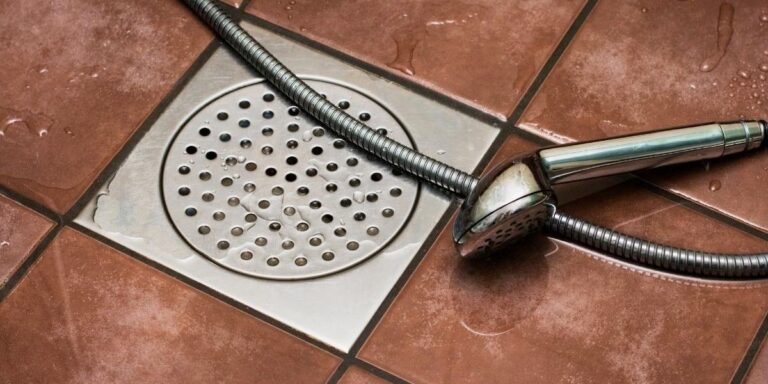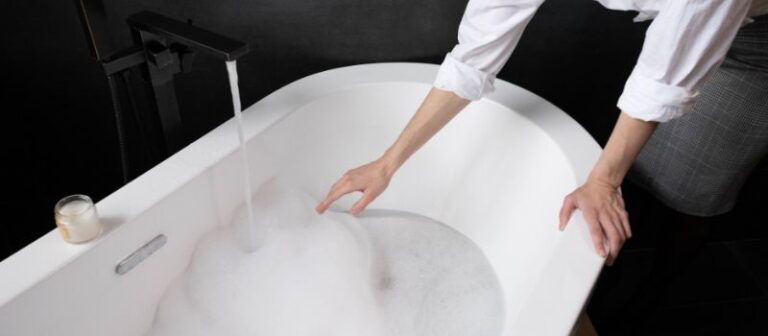Why Fill Bathtub With Water During Power Outage?
During a power outage, it is imperative that you take proactive measures to ensure your safety and well-being. One often overlooked but crucial step is to fill your bathtub with water. This seemingly simple task can prove to be a lifesaver in several situations. By filling your bathtub, you ensure a reserve of water for drinking, cooking, and personal hygiene, should the power outage persist for an extended period of time.
Additionally, you can use this water to flush toilets when the regular water supply is compromised. This step is particularly important if you live in an area prone to natural disasters or where power outages are frequent. Don’t underestimate the importance of filling your bathtub with water during a power outage; it could mean the difference between your survival and vulnerability in a time of crisis.
Filling the bathtub with water before a power outage provides a supply of water that can be used for flushing toilets, washing hands, and providing drinking water for pets when taps stop working.
Key Takeaways:
- Water supply: Filling the bathtub with water during a power outage ensures a temporary supply of water for essential needs such as drinking, cooking, and hygiene.
- Easier sanitation: Having water stored in the bathtub allows for flushing toilets, which can prevent unsanitary conditions and maintain hygiene when plumbing systems are affected.
- Preparation for emergencies: Filling the bathtub with water in advance is a proactive measure that ensures readiness during power outages and other emergency situations that may disrupt water supply.
Understanding the Factors
Now let’s dive deeper into why filling your bathtub with water during a power outage is essential. By understanding the factors involved, you’ll realize the importance of this simple yet crucial step.
The Relation Between Water and a Power Outage
During a power outage, access to water becomes limited or completely cut off. The water supply relies heavily on electricity to pump and deliver it to your faucets. Without power, you won’t be able to flush toilets, take showers, or even access clean drinking water. This scarcity can lead to numerous inconveniences and potential health hazards.
Step-by-step Examination of the Scenario
Let’s take a step-by-step look at the scenario to better understand why filling your bathtub beforehand is a wise move:
- If a power outage occurs, your home’s water supply will cease to function, leaving your faucets dry.
- You won’t be able to flush your toilets, which can quickly become a sanitation concern.
- Without running water, personal hygiene becomes difficult, potentially leading to discomfort and health issues.
- In the case of extended power outages, the lack of clean drinking water can pose a serious risk to your well-being.
By filling your bathtub with water, you can mitigate these problems and ensure a supply of water for various needs during the power outage.
The Importance of Preparedness
Now that you understand the connection between water and a power outage, it’s crucial to highlight the significance of preparedness in such situations. While power outages are often unforeseen, being prepared can make a tremendous difference in how you navigate through them.
By taking proactive steps like filling your bathtub with water, you can ensure you have a reserve supply to rely on until the power is restored. This extra water can be used for necessities like personal hygiene, flushing toilets, or even basic cleaning tasks.
Your preparedness not only allows you to stay comfortable and maintain sanitary conditions during the outage but also helps you avoid potential health risks that may arise from water scarcity.
Remember, having access to water is vital, and ensuring you have a backup supply on hand can give you peace of mind during uncertain situations.
Benefits of Filling the Bathtub
Now that you are aware of the importance of preparing for a power outage, let’s delve into the benefits of filling your bathtub with water. When faced with a power outage, having a bathtub filled with water can provide you with several advantages that you may not have considered before. Let’s explore these benefits in detail.
Pros of Having Additional Water Storage
Having access to additional water storage during a power outage can prove to be invaluable. When the power goes out, your water supply may be affected, leaving you without the ability to use your faucets, toilets, or any other water-dependent appliances. By having a filled bathtub, you’ll have a reserve source of water readily available for various purposes.
Special Tips for Filling and Storing
When it comes to filling and storing water in your bathtub during a power outage, there are a few special tips you should keep in mind to ensure the water remains clean and safe to use. Follow these recommendations:
- Use clean water: Fill your bathtub with clean water from your tap. If your tap water isn’t suitable for drinking, it is still safe for other purposes such as sanitation and hygiene.
- Prevent contamination: To prevent contamination, make sure your bathtub is clean before filling it with water. Avoid using any cleaning agents or chemicals in the tub while it serves as an emergency water source.
- Secure the bathtub: Ensure that the tub is properly sealed and covered to avoid any debris or contaminants from getting into the water. You can use a bathtub cover or even a plastic sheet to protect the water.
- Monitor the water level: Regularly check the water level in your bathtub and replenish it if necessary. If the water starts to look murky or unclean, it’s advisable to replace it with fresh water.
By following these special tips, you can extend the usability of the water stored in your bathtub and keep it safe for your emergency needs during a power outage.
Potential Downfalls
Any time you are faced with a situation where you need to fill up your bathtub during a power outage, there are a number of potential downfalls you should consider. These include the cons of filling up the bathtub and exploring alternatives and their pros and cons.
Cons of Filling up the Bathtub
While filling up the bathtub with water may seem like a logical solution during a power outage, there are some drawbacks to consider. Firstly, keeping your bathtub filled with water means that you won’t be able to use it for its primary purpose – taking a bath or shower. This can be a significant inconvenience, especially if the outage lasts for an extended period.
Additionally, if you have small children or pets in your home, a filled bathtub poses a safety hazard, increasing the risk of drowning accidents. Lastly, if the water supply to your home becomes contaminated during a disaster or emergency, the water in the bathtub may also become unsafe for consumption.
Exploring Alternatives and Their Pros and Cons
If the cons of filling up the bathtub during a power outage concern you, it’s worth exploring alternatives and weighing their pros and cons. Here are some alternatives you can consider:
- Water Storage Containers: Using proper water storage containers allows you to store a sufficient amount of water for drinking, cooking, and hygiene purposes. Pros include ensuring a safe supply of water for your needs and portability if you need to evacuate. However, cons include the need for additional storage space and the need to regularly rotate the water to ensure freshness.
- Bottled Water: Keeping a stockpile of bottled water is a convenient solution. Pros include the ease of use and no need for extra storage space. However, cons include the cost of purchasing bottled water in bulk and the environmental impact of single-use plastic bottles.
- Water Purification Methods: Investing in a water purification system, such as a filter or purifying tablets, can allow you to make any available water safe for consumption. Pros include the ability to treat various water sources and the long-term cost-effectiveness. However, cons include the initial investment in the equipment and the need for knowledge on proper water purification techniques.
Consider these alternatives and carefully weigh their pros and cons to determine the best solution for your specific needs and circumstances. Remember, your safety and well-being are of utmost importance in any emergency situation.
Practical Guide
The practical guide will provide you with step-by-step instructions on filling the bathtub during a power outage and offer additional tips to help you deal with the situation effectively.
Step-by-step Instructions on Filling the Bathtub
In order to ensure you have an adequate water supply during a power outage, it is crucial to fill your bathtub before the power goes out. Follow these simple steps to do so:
- Ensure your bathtub is clean and free from any debris.
- Close the drain plug securely to prevent water leakage.
- Turn on the faucet and adjust the water temperature to your preference.
- Allow the bathtub to fill with water until it reaches a level that is sufficient for your needs.
- Monitor the filling process to prevent any overflow by periodically checking the water level.
- Once the bathtub is filled, turn off the faucet and keep the drain plug securely closed.
By following these step-by-step instructions, you can ensure that you have access to a reserve of water that can be used for various purposes during a power outage.
Additional Tips for Dealing with a Power Outage
Aside from filling the bathtub with water, there are a few more tips that can help you effectively manage a power outage. Consider the following:
- Stock up on essential supplies: Make sure you have a sufficient supply of bottled water, non-perishable food items, batteries, flashlights, and a battery-powered or hand-crank radio.
- Keep your refrigerator and freezer closed: Minimize the frequency of opening these appliances to keep the temperature inside as cool as possible. A fully stocked refrigerator can typically keep food cold for about four hours, while a freezer can keep food frozen for up to 48 hours if unopened.
- Use alternative light sources: Utilize battery-powered lanterns or candles placed in safe areas to provide illumination when the lights go out. Avoid using open flames for an extended period of time and never leave them unattended.
- Stay informed: Keep a battery-powered or hand-crank radio tuned in to local news stations for updates on the power outage, emergency instructions, and restoration progress.
- Avoid using unsafe heating sources: Do not use gas stoves, propane heaters, or outdoor grills indoors for heating purposes. These can produce carbon monoxide, which is a silent but deadly gas.
Remember, your safety and well-being are paramount during a power outage. Following these additional tips will help you navigate through the situation with greater ease and minimize potential risks.
Conclusion: Why Fill Your Bathtub with Water During a Power Outage
By filling your bathtub with water during a power outage, you can ensure access to a vital resource that is often taken for granted – water. In the event of a power failure, your household water supply may also be affected, leaving you without access to fresh water for drinking, cooking, and hygiene.
Filling your bathtub before the outage occurs allows you to have a reserve of water that can be used for basic needs until the situation is resolved. Taking this simple precautionary measure can provide you with peace of mind and ensure that you are well-prepared for unexpected disruptions in your water supply.

William J. Bullock is a licensed plumber with over 15 years of experience installing and repairing bathtubs. He runs his own plumbing company in Greenville and serves residential and commercial clients. William is dedicated to providing honest, transparent advice to help homeowners make informed decisions about their bathroom renovations.
He has established expertise in selecting bathtubs, planning custom installations, diagnosing issues, and completing repairs. William aims to share practical tips and reliable recommendations based on extensive hands-on work. When he isn’t on a job site, William enjoys spending time with his family and volunteering at local community events. He takes pride in delivering quality service and enjoys helping people upgrade their homes.







